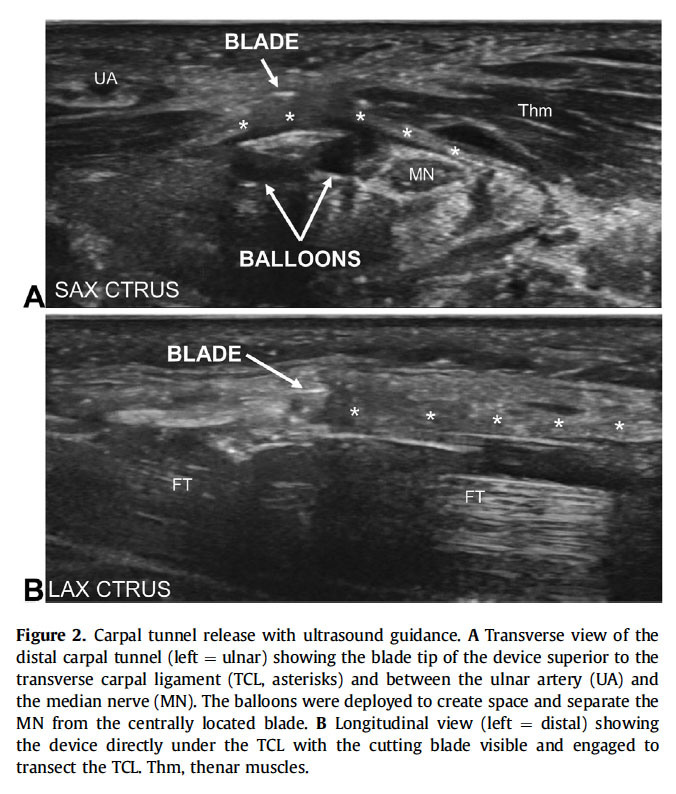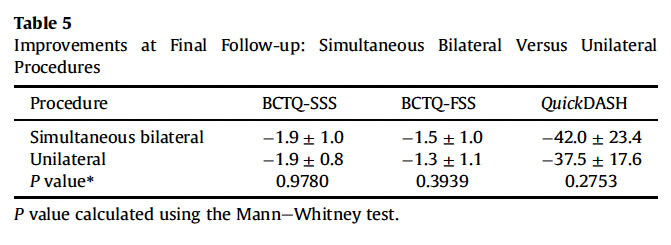
Carpal tunnel syndrome (CTS) is a widespread condition affecting millions of individuals, often requiring surgical intervention when conservative treatments fail. The Sonex technique, a minimally invasive ultrasound-guided carpal tunnel release (CTR-US), has emerged as a promising alternative to traditional surgical methods. One of the key considerations in CTR surgery is whether to treat both wrists simultaneously (bilateral) or one at a time (unilateral). A recent study by Cano et al. provides valuable insights into the long-term efficacy and safety of bilateral versus unilateral procedures using the Sonex technique (Cano et al., 2024).
Bilateral vs. Unilateral Approach: Key Findings
The study included 102 patients, with 55 (53.9%) undergoing simultaneous bilateral procedures, 42 (41.2%) receiving unilateral procedures, and five (4.9%) having staged bilateral surgeries. The results showed no significant difference in long-term outcomes between those treated bilaterally versus unilaterally. Both groups experienced substantial and sustained improvements in symptom severity, functional status, and overall patient satisfaction (Cano et al., 2024).
The Future of CTR with the Sonex Technique
The Cano et al. study reinforces the efficacy and safety of CTR-US for both bilateral and unilateral procedures, confirming that long-term outcomes are comparable regardless of the approach. The minimally invasive nature of the Sonex technique allows for faster recovery, minimal scarring, and reduced post-operative discomfort, making it a preferred option for many patients (Wang et al., 2021).
For individuals suffering from bilateral carpal tunnel syndrome, the choice between simultaneous and staged procedures should be guided by individual needs, occupation, and lifestyle. With the high success rates reported for both approaches, patients and surgeons can confidently opt for the strategy that best aligns with their goals for recovery and function (Louie et al., 2013).
Advantages of the Bilateral Approach


When to Consider a Unilateral Approach
While bilateral CTR offers efficiency, there are instances where a unilateral approach may be more appropriate:
Conclusion
Whether performed bilaterally or unilaterally, the Sonex technique offers an effective, minimally invasive solution for carpal tunnel syndrome. The study's findings emphasize that patients can expect significant and lasting relief, high satisfaction rates, and minimal risk of complications, making CTR-US a valuable advancement in the treatment of CTS (Cano et al., 2024).
References
(781) 591-7855
20 Walnut St
Suite 14
Wellesley MA 02481
Adductor longus selective tenotomy is a modern surgical treatment for chronic groin pain that offers faster recovery and better outcomes than traditional full release surgery. The adductor longus, an inner thigh
Read MoreDiscover how ultrasound helps diagnose plantar fat pad atrophy, a leading cause of ball-of-foot pain. Learn about symptoms, thickness cutoffs, and why early detection matters for relief.
Read More